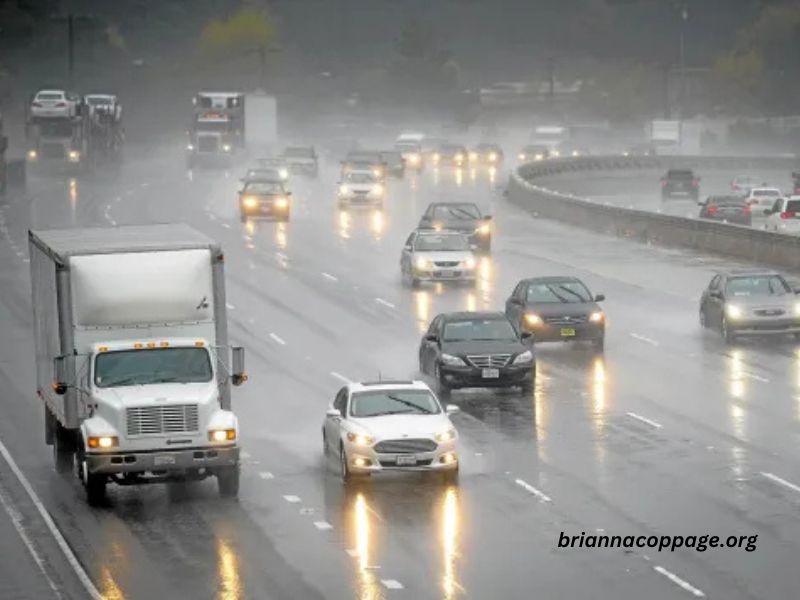Driving in harsh conditions is a term often used to describe situations where the weather, road, or environmental factors create challenges for vehicle operation and safety. While many people think of harsh driving conditions as snowstorms, icy roads, and torrential rain, places with unique weather patterns and geographical features can also present driving challenges. Los Angeles, known for its sunny skies and mild climate, may not immediately come to mind when you think about harsh driving conditions. However, despite its reputation for clear skies, LA is not without its own set of challenges for drivers. In this article, we will explore whether driving in Los Angeles is considered harsh, the factors that contribute to its driving conditions, and the safety precautions drivers should take to navigate the roads of this bustling city.
1. Climate and Weather Patterns in Los Angeles
Los Angeles is known for its Mediterranean climate, characterized by warm, dry summers and mild, wet winters. The weather in LA is generally pleasant, with sunshine being a common feature year-round. However, certain weather conditions, especially during specific times of the year, can make driving in LA more challenging than one might think.
a) Rainfall and Flooding
While Los Angeles doesn’t experience heavy rain throughout the year, the city is subject to seasonal rainfall, usually in the winter months. On average, LA gets about 15 inches of rain annually, with most precipitation occurring between November and March. However, even though the city doesn’t get as much rain as many other areas in the U.S., this moderate rainfall can still make driving hazardous.
The problem lies in the fact that Los Angeles’s infrastructure is not always built to handle heavy rain or floods. Due to the city’s frequent dry spells, the roads are prone to slick conditions when it does rain. Oil and debris build-up on the roads create slippery surfaces that can cause drivers to lose control of their vehicles, especially in the first rainstorms of the season. Flooding can also occur in low-lying areas, creating hazardous driving conditions and traffic jams.
b) Wildfires and Smoke
Wildfires are another natural disaster that affects driving conditions in Los Angeles. California is prone to wildfires, especially during the hot, dry summer and fall months. These fires can significantly impair visibility on the roads, as smoke from the fires can blanket large portions of the region, reducing visibility to dangerous levels. Drivers may experience difficulty seeing other vehicles, road signs, and hazards, making driving hazardous.
Additionally, smoke from wildfires can pose health risks, particularly for individuals with respiratory conditions, which is another aspect of harsh driving conditions. In these situations, drivers are advised to avoid traveling when possible and follow public safety guidelines regarding air quality.
c) Fog in Coastal Areas
Another weather phenomenon that affects Los Angeles is fog, particularly along the coast. The city’s proximity to the Pacific Ocean means that coastal fog is not uncommon, especially in the morning and evening hours. Fog can drastically reduce visibility, making driving dangerous, particularly on bridges, hills, and winding coastal roads. Areas like the Pacific Coast Highway and the roads leading to and from Malibu often experience dense fog, which can be a challenge for drivers.
2. Topography and Geography of Los Angeles
The geography and topography of Los Angeles also contribute to its unique driving challenges. The city’s sprawling urban layout is surrounded by mountains, canyons, and valleys, which can cause drivers to face different obstacles depending on the route they take.
a) Hills and Mountain Roads
Los Angeles is located in a region surrounded by mountainous terrain. The presence of steep hills and winding mountain roads can make driving more difficult, especially during the rainy season. These roads can become slippery, and drivers unfamiliar with the terrain may find themselves struggling with traction, especially if their vehicle is not well-equipped for such conditions.
The mountain roads can also be narrow, making it harder for vehicles to pass one another safely, especially during high-traffic times or when there are accidents. Additionally, the combination of poor visibility due to fog and the challenging terrain of the mountains can lead to more hazardous conditions for drivers.
b) Traffic Congestion
Los Angeles is famous for its heavy traffic, with some of the worst traffic congestion in the United States. While traffic itself may not necessarily be considered a “harsh” condition in the traditional sense, it does pose a unique challenge to drivers. The stop-and-go nature of the traffic can increase the likelihood of accidents, particularly rear-end collisions, and can result in frustrating driving experiences for residents and visitors alike. Prolonged periods of sitting in traffic can also contribute to fatigue, which can impair a driver’s reaction times and decision-making ability.
c) Canyon Roads
Los Angeles is also home to a network of canyon roads, which are popular for both commuters and recreational drivers. While these scenic routes provide stunning views of the city, they can also be tricky to navigate. The winding nature of canyon roads, combined with the often narrow lanes, can make it challenging for drivers, particularly those who are unfamiliar with the area. Additionally, these roads may be prone to landslides or debris after heavy rains, posing further dangers.
3. Driving Hazards in LA: Distracted Drivers, Poorly Maintained Roads, and Construction
Apart from the weather and geography, other factors make driving in Los Angeles more challenging.
a) Distracted Drivers
Los Angeles is known for its heavy use of mobile phones, and distracted driving is a common issue on its roads. Many drivers engage in activities such as texting, talking on the phone, or even using social media while behind the wheel. This behavior significantly increases the risk of accidents, as drivers may fail to notice changes in traffic patterns or road conditions in time to react.
The high volume of vehicles on the road, combined with distracted drivers, creates an environment where accidents are more likely to occur, adding an additional layer of difficulty to navigating LA’s roadways.
b) Poorly Maintained Roads and Potholes
Another contributing factor to harsh driving conditions in Los Angeles is the state of some of the roads. While major roads and highways are well-maintained, some areas of the city suffer from potholes, worn-out road markings, and debris on the roads. These conditions can make it more difficult to navigate, particularly during inclement weather when visibility is already reduced.
Additionally, construction projects and road repairs are frequent in LA, leading to road closures, detours, and traffic delays. Drivers must stay alert and be prepared for sudden changes in traffic patterns and road conditions due to construction zones.
4. Safety Precautions for Driving in Los Angeles
Given the unique challenges faced by drivers in Los Angeles, it’s essential to take certain safety precautions when driving in the city, especially when conditions change unexpectedly.
a) Prepare for Rain
Although rain in Los Angeles is infrequent, it’s essential to prepare for it. Drivers should check their tires regularly to ensure they have sufficient tread for wet conditions. It’s also important to drive at slower speeds in wet conditions, especially during the first rainfall of the season when the roads are most slippery. Keeping a safe distance from the car in front is vital to avoid rear-end collisions.
b) Stay Alert for Wildfires
During wildfire season, drivers should stay informed about fire alerts and road closures. It’s essential to avoid driving in areas where smoke or fires are present, as poor air quality and reduced visibility can create dangerous driving conditions. Keeping windows rolled up and using air conditioning to filter out smoke is also advisable.
c) Be Mindful of Coastal Fog
If you’re driving along the coast, be extra cautious during the early morning or evening when fog is most common. Use fog lights, reduce your speed, and increase the following distance to allow enough time to react if the visibility suddenly worsens.
d) Defensive Driving
With the high number of distracted drivers in Los Angeles, practicing defensive driving is essential. Always be aware of your surroundings, keep a safe distance from other vehicles, and anticipate potential hazards. Staying alert and being prepared for the unexpected can significantly reduce the likelihood of an accident.
Conclusion
While Los Angeles may not immediately come to mind as a location with harsh driving conditions, it has its own set of challenges that drivers must navigate. The occasional rain, wildfire smoke, fog, and mountain terrain, combined with heavy traffic and distracted driving, all contribute to a driving environment that requires caution and preparation. Understanding these factors and taking appropriate safety measures can help drivers safely navigate LA’s roads, ensuring they remain prepared for whatever challenges come their way. In the end, while LA might not be known for blizzards or icy roads, it still offers its own brand of harsh driving conditions that drivers should be mindful of.






